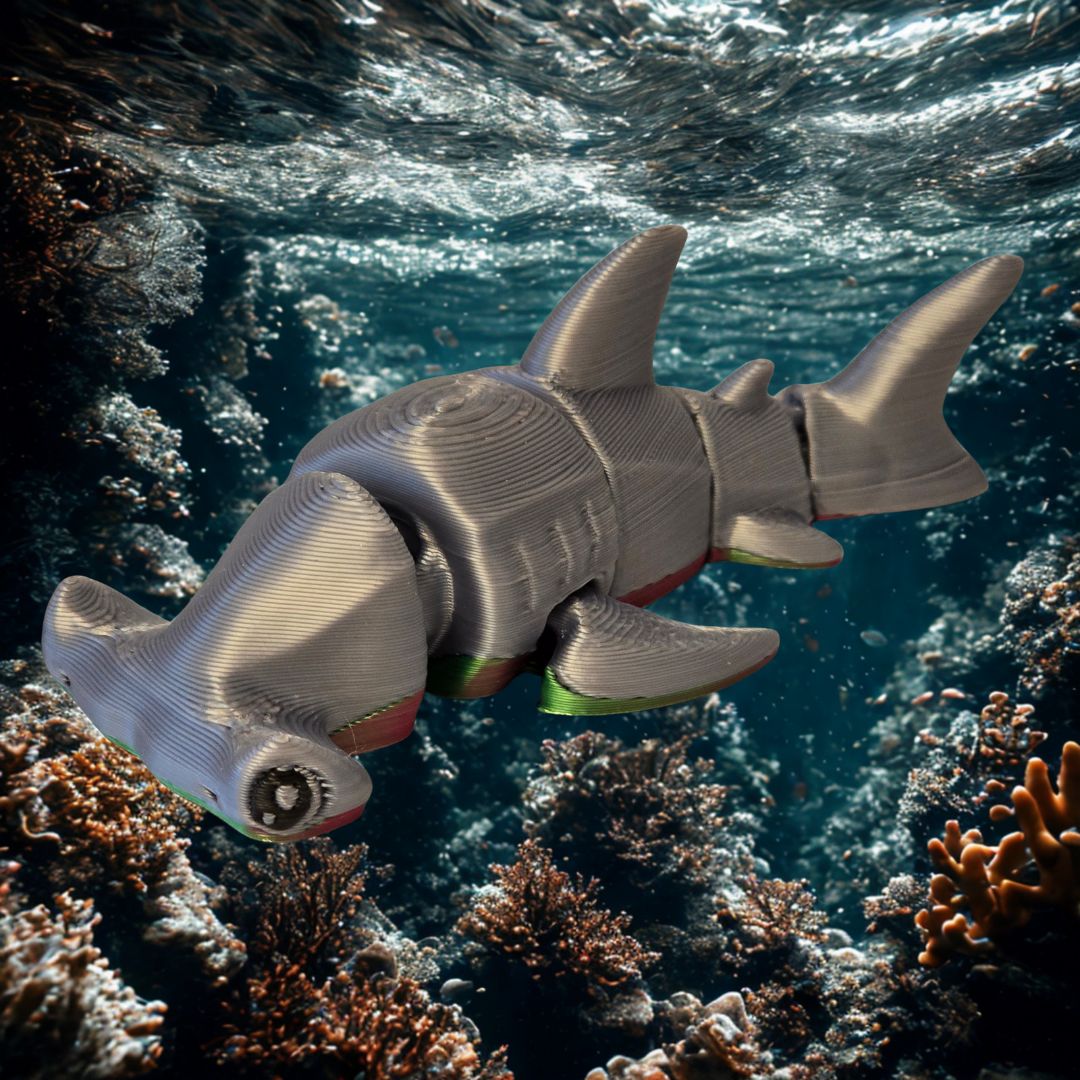Hoover The Hammerhead Shark Fidget
Fidgeting with a Hammerhead Shark makes you precise and clear-eyed. Hoover says so!
Hammerhead sharks are some of the ocean’s most distinctive predators, instantly recognizable for their wide, flattened heads—called cephalofoils—that look like nature’s version of a wrench.
Here’s the breakdown:
🦈 Species & Size
There are nine species of hammerhead sharks, including the great hammerhead, scalloped hammerhead, and bonnethead.
The great hammerhead can grow up to 20 feet (6 meters) long, though most species are smaller.
They can weigh anywhere from 300 to 1,000 pounds.
🔍 Why the Hammer-Shaped Head?
The cephalofoil gives them enhanced vision—their eyes are spaced far apart, letting them see a wider area.
It’s packed with sensory organs that detect electrical signals from prey (great for hunting stingrays buried in sand).
The wide head also helps them make sharp turns in the water.
🍽 Diet
They’re carnivores, eating fish, squid, crustaceans, and especially stingrays—a favorite snack.
The great hammerhead has been known to cannibalize smaller hammerheads.
🌊 Habitat
Found in warm coastal waters worldwide, sometimes venturing into deeper waters.
Many species cruise along continental shelves and coral reefs.
⚠️ Threats
Overfishing for their fins, bycatch in commercial nets, and habitat loss have caused population declines.
Several species are considered endangered or vulnerable.
Fun fact: Hammerheads sometimes school in groups of hundreds, especially during the day, which is unusual for sharks that size.

